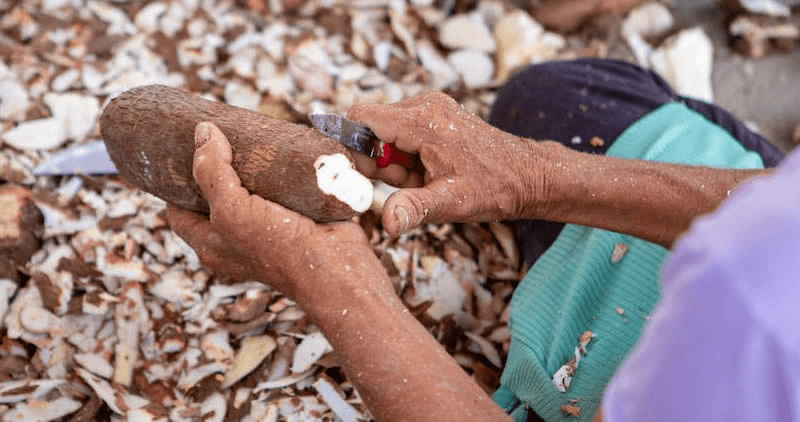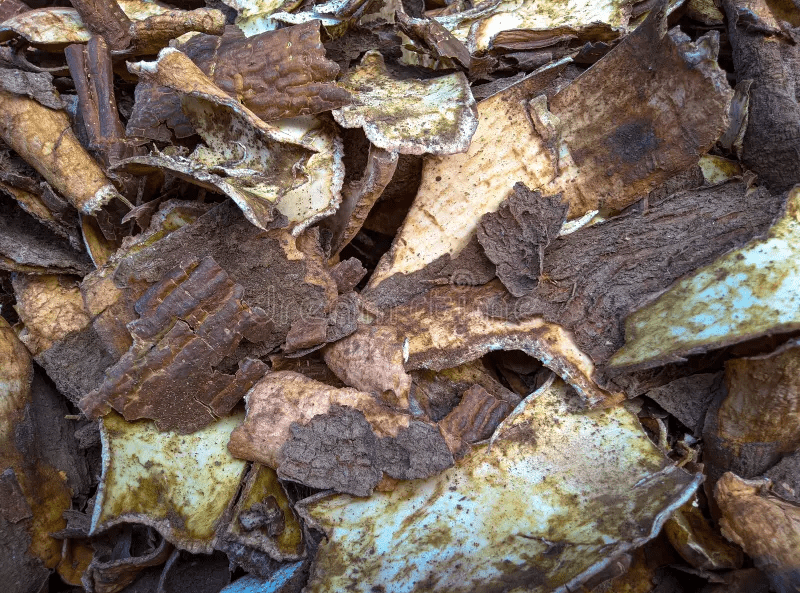Fresh cassava contains cyanic acid (cyanide) which is poisonous to animals and can lead to their death. So, it is better well fermented before they are given to the ruminant animals.
When peeled, the cassava peels should be spread in the sun for two or three days for fermentation to occur before they can then be served to the ruminant animals.
However, according to research, the utilization of cassava peels by ruminants is however limited by their lower crude protein content, hydrogen cyanide (HCN) concentration and poorer methods of conservation and storage that further reduces their nutritional quality.
What Is Nutrition?

Food is a common connection across all cultures, races and ethnicities. Food is a way to come together and enjoy the pleasure of a delicious meal. But food is more than just fun. It’s the fuel for our body. Providing our cells with energy needed to carry out all of their daily functions.
Food is made up of three main macronutrients, carbohydrates, protein and lipids. All animals, including both livestock and humans, need the correct amount of each to be healthy. Animals also need water and micronutrients, like vitamins and minerals. Today, we’re going to look at how much of each of these nutrients animals need and the importance of each.
1. Carbohydrates
Bread, pasta, rice and potatoes are staples in diets across the globe. These tasty foods all are composed primarily of carbohydrates. Carbohydrates are sugars, either simple sugars like glucose or fructose, or long chains of sugars assembled together, like starch. Many diets have shunned carbohydrates, but they are actually essential for all animals. Humans should get between 45% – 65% of their calories from carbohydrates.
Carbohydrates are broken down to simple sugars in the digestive system. These sugars can then be stored or used immediately to make energy needed for growth, repair, and to generate heat to keep warm. Carbohydrates can be stored in the liver as glycogen, but these stores can be depleted and thus carbohydrates must be consumed daily for optimal health.
Carbohydrates are especially important for the brain, which only runs on glucose, a simple sugar. It cannot derive energy from other macronutrients. This is why people can faint from low blood sugar levels. The brain simply cannot do its job without sugar.
Herbivorous livestock also require fiber as a carbohydrate. Fiber is found in plant matter and is composed of long chains of sugars in the form of cellulose. Fiber is largely not broken down by the digestive system, but instead by bacteria in our gut.
Grazing animals like cattle have extensive stomach compartments filled with bacteria to break down the fiber. Fiber also absorbs water and keeps the digestive system moving to create feces.
Read Also: The ideal Time to Take Ruminants out for Grazing
2. Proteins
When we think of proteins we might be thinking of protein powder sold to gym goers in health food stores. But, protein isn’t just for building muscle. Proteins are macronutrients that are needed for growth and repair. Humans require between 10% – 35% of their calories to come from protein depending on their age and activity level.
Proteins are made of amino acids. Some amino acids the body can make by itself, but others called essential amino acids must come from our diet. Different foods have different compositions of amino acids and thus protein sources. Meat usually has a complete set of amino acids, but vegetarian protein sources need to be varied in order to get all the essential amino acids.
This can be especially problematic for herbivorous livestock, since they only eat plants. These animals may need feed supplemented with the essential amino acids for proper growth and development.
3. Lipids
Everyone loves a good lipid. Lipids are fats and are in much of our favorite foods, such as butter, oil and the goods produced with them. Lipids used to be vilified in nutrition, but they are actually very important for our body. Lipids are used for long term energy storage in the body, cushion our organs, and even insulate our brain cells to help them efficiently send messages to the body.
There are two main types of lipids, saturated and unsaturated. Saturated lipids come from animal fats and can be harmful to our bodies. However, unsaturated lipids are essential for our health and should be included in a healthy diet.
Unsaturated lipids come from plant based fats like oil and avocado. However, the amount of fat in an animal’s diet should be balanced with other macronutrients. Human diets should have no more than 20% – 25% of calories derived from lipids.
4. Water
Water is the essential ingredient for life. It’s so important that scientists looking for life on other planets first look for signs of water. No life can exist without water. But, how much water do we need? This can be a tricky question as water intake depends on the animal, environmental conditions, activity and age level.
In terms of livestock, cattle have some of the greatest water requirements, with some cows needing up to 90 liters of water per day during hot summer months.
For comparison, humans are recommended to drink three liters of water and females 2.2 liters per day. However, hotter days and greater activity will result in more water loss, and thus a greater water intake.
Read Also: Ideal Feeds for Young and Adult Ruminant Animals
Fresh Cassava and Cassava Peels in the Livestock Feed Industry
Cassava is widely used in most tropical areas for feeding pigs, cattle, sheep and poultry. Dried peel of cassava roots are fed to sheep and goats, and raw or boiled roots are mixed into a mash with protein concentrates such as maize, sorghum, groundnut, or oil palm kernel meal and mineral salts for livestock feeding. The leaves and stems of the cassava plant are considered a waste product.
However, analytical tests have shown that the leaves have a protein content equivalent to that of alfalfa (about 17-20%). Feeding experiments also showed that dehydrated cassava leaves are equivalent in feed value to alfalfa. Imports of dehydrated alfalfa in the Far East, mainly in Japan, have reached about 240 000 t/yr.
Therefore, a large potential exists for the exportation of dehydrated stems and leaves of cassava. In Brazil and many parts of Southeast Asia, large quantities of cassava roots, stems, and leaves are chopped and mixed into silage for the feeding of cattle and pigs. This use of cassava is increasing.
Cassava is similar to feed grains as it consists almost entirely of starch and is easy to digest. The roots are, therefore, especially suited to feeding young animals and fattening pigs.
Many feeding experiments have shown that cassava provides a good quality carbohydrate, which may be substituted for maize or barley and that cassava rations are especially suitable for swine, dairy cattle, and poultry.
However, cassava cannot be used as the sole feedstuff because of its deficiency in protein and vitamins, but must be supplemented by other feeds that are rich in these elements. The amount of cassava and its products fed to animals as scraps in the tropical regions must be fairly large, but there is no way of estimating it.
Barnyard fowls, goats, and pigs probably consume cassava roots and leaves regularly in many parts of the tropics, but a true livestock feeding industry based on cassava has been developed only in very few areas.
Read Also: How to Get Rid of Crickets in Houses

